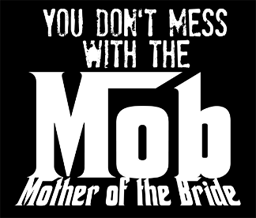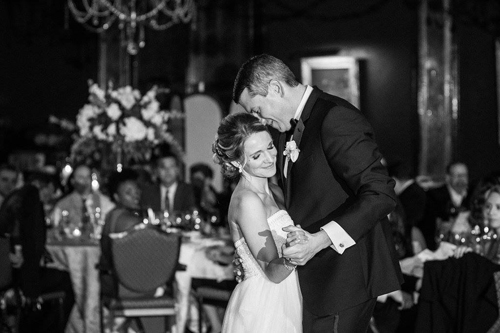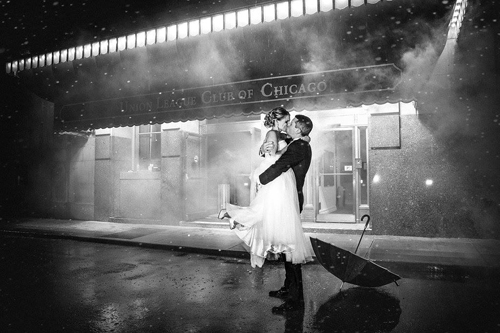 In my professional life, I work with companies looking to create customer experiences that’ll help set them apart from the competition. In the process, we take a hard look at the touchpoints – digital & physical, delivered directly through their staff or indirectly through channel partners. We analyze what content they offer – and how and where they provide it. And we look at all of that through the lens of a customer’s journey – from initial discovery of the brand through purchase and beyond.
In my professional life, I work with companies looking to create customer experiences that’ll help set them apart from the competition. In the process, we take a hard look at the touchpoints – digital & physical, delivered directly through their staff or indirectly through channel partners. We analyze what content they offer – and how and where they provide it. And we look at all of that through the lens of a customer’s journey – from initial discovery of the brand through purchase and beyond.
In those scenarios, we take on the role of key decision-makers who are ‘on a mission’ – and evaluate the experience IRL, unencumbered by any insider knowledge of what the brand ‘meant to do.’ We only know what we find (or don’t find) as we try to make good buying decisions. A heuristic process, yes – and always enlightening in terms of what’s working and what’s not.
In my personal life, I had the unique opportunity to experience the wedding industry first-hand as mother-of-the bride (MOB) – and it was equally eye-opening. In the wise words of George Banks:
“I used to think a wedding was a simple affair. Boy and girl meet, they fall in love, he buys a ring, she buys a dress, they say I do. I was wrong. That’s getting married. A wedding is an entirely different proposition.”

Without question. For one thing, there’s a whole lot more emotion running throughout this decision journey than most – as couples and their families look to create a memorable celebration. It’s also surprisingly complex, even for those with event planning experience, as each decision can have a significant impact on logistics, budget and guest experience.
Creating that magic often comes at a hefty price. Outside of tuition, it can be one of the largest investments families make. According to a 2016 survey by The Knot, the average cost of a wedding nationwide is $35,329. In Chicago, make that $60,000 and in the Big Apple, it’s a whopping $78,500!
That should be great news for the thousands of vendors competing for a share of the more than $300 billion in revenue the industry generates. But despite the big ticket, the customer experience can be remarkably inconsistent.
Our experience with the big fat global wedding industry underscores five key CX best practices that all businesses should keep in mind:
- Understand the buying center. When there’s a sizable investment, no single person is making the buying decision – or series of decisions. It’s driven by a team – in this case, the couple primarily and their biggest stakeholders (their parents). Everyone has skin in this game so it’s important to understand that and provide the kind of information that speaks to their specific needs and pain points. Failure to communicate effectively here can alienate decision-makers; if ‘they’re not getting me,’ the prospect is off looking at alternatives.
- Use the data you have. Throughout the decision process, vendors solicit a lot of information from prospective customers. In this case, they ask you to complete detailed questionnaires about your vision and specific plans for the big day and a host of smaller events surrounding it (e.g., bridal luncheon, rehearsal dinner, and post-wedding brunch to name a few). You would expect that would help them better customize the experience. No “Hello <First name>” mass customization gone awry, for example. Those that use the collected data to tailor the information or guide subsequent conversations, shine. Customers feel understood and valued. For those who don’t, customers may feel more like an extra in Groundhog Day; covering virtually the same territory each time hardly engenders any sense of progress which is critical to a positive experience.
- Make your information readily accessible on multiple channels. Much of the decision journey happens before the prospective customer talks to anyone from the company. Look at your digital and social presence – on your owned, earned and paid assets. Pinterest, Instagram and YouTube – along with traditional print media (there are many beautiful bride magazines) provide great inspiration.
-
- The go-to crowdsourcing sites (like The Knot and WeddingWire) are huge when it comes to creating a short list of potential vendors. Most industries have these types of sites that aggregate options, facilitate research and include customer ratings. Make sure you’re not only listed but that you ask your happy customers to provide feedback.
- Do your owned assets – your website and branded social sites – showcase what makes you different, a better choice than the rest? Photos, virtual tours, voice of the customer, and videos can bring the brand to life and distinguish you in a sea of choices. Great case in point: Spoken 4, the amazing band that kept our guests on dance floor from the opening song, captures end of evening testimonials from the happy bride and groom. Authentic, in the moment, peer-to-peer – brilliant!
- Do you make it easy to find the specifics? Providing FAQs, plans, and pricing info are key. A surprising number of vendors fail to provide the kind of information that helps a prospect understand their options and confidently do a side-by-side comparison. Instead, they force prospects to ‘work for it.’ A poor but all too common reality.
-
- Keep a customer-first orientation. This can often prove challenging. One of the first big decisions from which many other decisions flow is selecting the venue. According to The Knot, there are 499 venues to choose from in greater Chicago. After researching options that fit our criteria, one location on our short list made it clear immediately that it was ‘all about them.’ In response to every question or what-if raised on the site visit (all to determine how this venue might work for us), there was a quick and resounding NO, without any attempt to help find a solution. It was ‘take it or leave it’ – which made for the easiest decision of our entire journey. In reality, a lovely site was eliminated largely due to that face-to-face experience. We were left wondering who was paying whom? If this is how they treat you BEFORE you sign a contract, we could only imagine how post-purchase would go. Keep in mind that I’ve made sure to relay this experience to my peers – who are unlikely to put this venue on their list. Which is a great segue to the next lesson . . .
- Don’t underestimate the impact of peer reviews and word of mouth. Consider these stats compiled by Help Scout. According to McKinsey,70% of buying experiences are based on how the customer feels they are being treated. Ninety-one percent of consumers read reviews and trust them nearly as much as what they learn from family and friends. Bad reviews reach twice as many ears than good reviews. Of those who leave negative reviews, 71% are motivated to save others from similarly bad experiences. Now think about your peers – in this case, the tight knit mom network. And it becomes clear why striving to improve the end-to-end customer experience matters – and why you never mess with the MOB.
Post script – Despite the twists and turns of the wedding decision journey, the most important experience of all – the one we created for our daughter and son-in-law, as well as the family and good friends who joined our celebration – was indeed magical.


Principal
Engaging your customers is at the heart of successful marketing programs. For more than 20 years, Cheryl has been building and executing content and thought leadership strategies designed to do just that. She is excited to be applying that well-honed skill to a help companies like Microsoft, Cisco, 3M, Intel, Capital One and Barclaycard tap into their stakeholder communities and build sophisticated content strategies.
Her experience base spans a range of industries – from technology and financial services to retail, travel, consumer products and healthcare. Cheryl has served as an integral member of her clients’ marketing teams, providing counsel on marketing and brand strategy, thought leadership, media relations, product introductions, and event management.
Prior to joining ComBlu, Cheryl spent 10 years leading corporate marketing for large, complex organizations.
